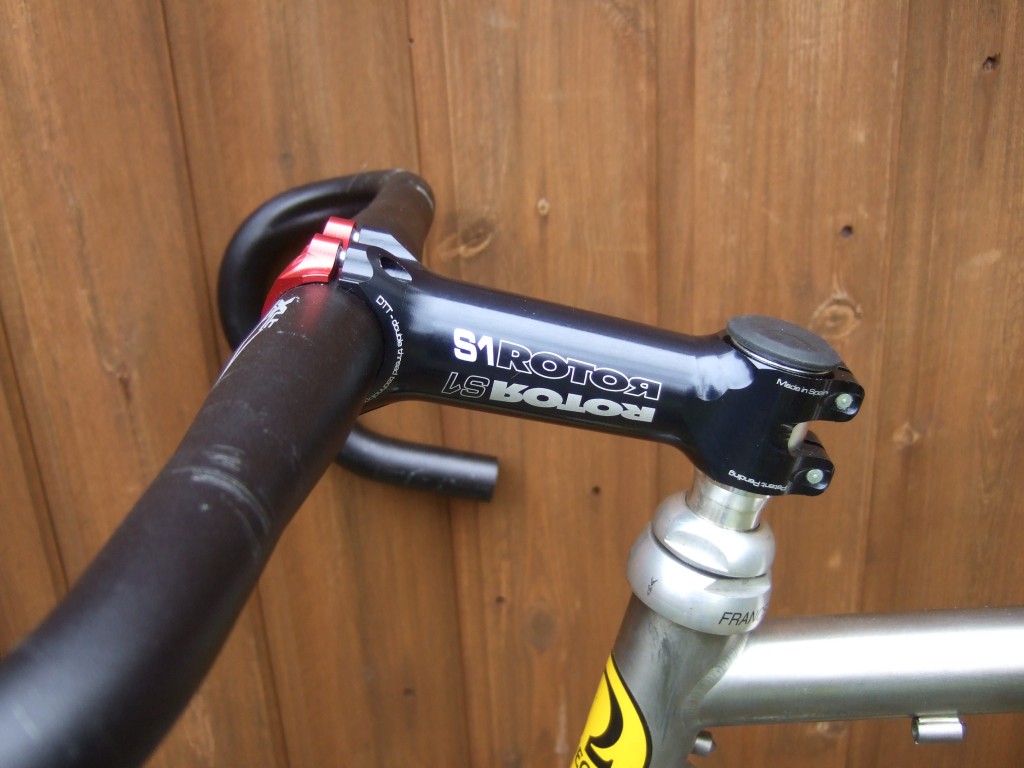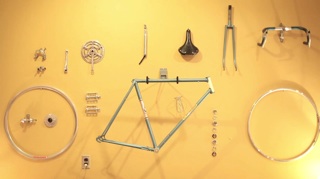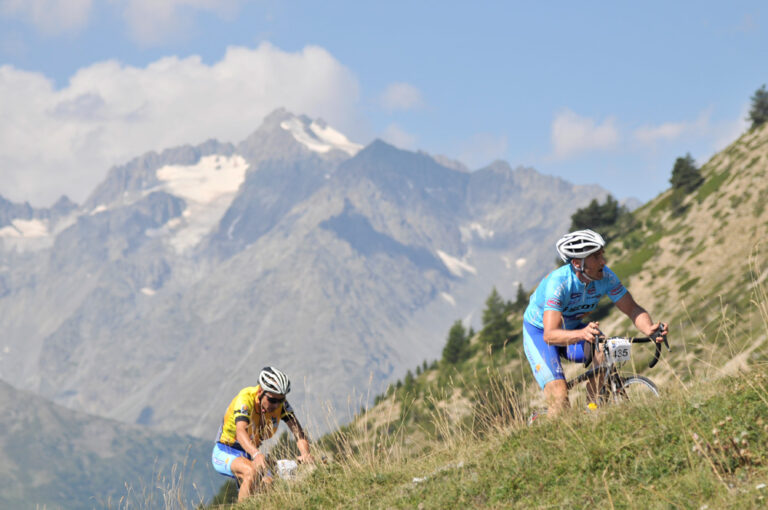Rotor S1 Stem £79.00
It’s not often we get to see a component that features genuinely ground-breaking technology, but here it is: the Rotor S1 Stem. Rotor is a Spanish manufacturer famous for cranksets that employ a complex mechanism to ‘throw’ each crank in turn over top dead centre as its opposite reaches the bottom of the pedal stroke.
With the S1 Stem, Rotor takes a more conservative look at one of the most vital parts of the lightweight bicycle, coming up with a design that, at first glance, shares many features with its leading competitors.
For starters, it’s CNC-machined from a billet of heat treated aluminium alloy and has the looks to prove it. The face plate is secured by two screws and has a large cutout in the middle so save weight, while the steerer clamp uses the familiar two screws with a recess between them.
Stem angle is 7.5deg off the perpendicular, and there’s a choice of lengths from 90mm to 130mm in 10mm increments. Bar clamp diameter is 31.8mm, steerer clamp diameter 1.125”. So far, so standard, barring the rakish lines of the stem, but look at the weight. 100g for the 90mm version, which like its longer siblings meets German industry standards for MTB riding, is very impressive, as is the 114g for the 120mm stem.
Key to this serious lack of weight is the ground-breaking technology previously referred to, which is known as DTT or Dual Thread Technology. This patented feature cleverly eliminates the need for a heavy, protruding bolt head by employing two distinct sections of thread on the same grub screw. Both are right-handed, but one has a coarse pitch and the other a fine pitch. This means that they move a different distance along their respective female threads per screw revolution; for example, as each grub screw securing the face plate is tightened, using a 3mm Allen key, it travels more quickly into the stem than through the plate, moving the plate towards the stem but at about half the speed of the coarse thread, thus clamping the bar.
Besides the saving in weight, other claimed advantages are cleaner aesthetics and reduced loadings on the material of the stem, partly because there is no need to resist the force otherwise exerted by the bolt head and partly because a low screw torque generates a big clamping force. Full test coming soon on RCUK.






